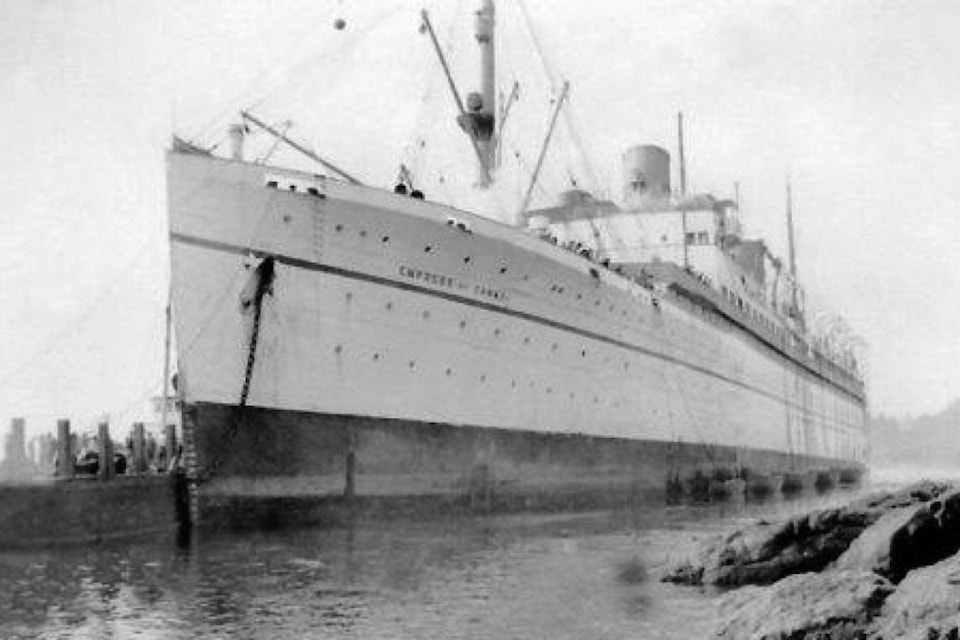We’re accustomed today to seeing cruise ships sail down the Strait of Juan de Fuca to stop at Ogden Point in Victoria or head past to Vancouver.
In an earlier period, from the early 1900s to the onset of the Second World War, there was another stately vessel that sailed these waters, also making Victoria and Vancouver their ports of call. These were the Empress liners, owned by CPR Steamships.
Pictured is the Empress of Canada, aground at Albert Head as a heavy bank of fog led the ship off course on its way to the quarantine station, as it completed a journey from Southampton, to Canada’s west coast in October 1929. The usual route for the 653-foot vessel, built on the Clyde in 1920, was between our coast and the Orient.
One of my childhood memories is with my family at Whiffin Spit, as my older brothers would have rowed our 14-foot rowboat from our Saseenos home to picnic on the Spit, and watching a beautiful glistening white ocean liner sail the strait with the Olympic Mountains as background. Even as a child, I was attracted to the romance of the sea.
Oldtime Sooke commercial fisherman Jack Homer was a British-born man who had grown up on his family’s farm at Albert Head in Metchosin. As the farm was on the water’s edge, the three Homer youngsters – Fred, Jack and sister Joan – all had their own putter boats.
Years later, Jack Homer recalled the foggy morning when he heard a ship’s whistle blowing constantly, and got outside to find the Empress of Canada aground near their door.
In this photo, given to the museum by Lanny Seaton, the stricken vessel has a scow on one side and lifeboats on the other. Ninety-six passengers, who had mainly boarded in San Francisco, were taken off by tender, and the steam tugs Salvage King, Hopkins and Burrard Chief worked hard to save the vessel.
There was great concern that if a gale struck the ship it could be lost, but after two days effort the tugs got the ship off the rocks and into the graving dock at Esquimalt.
While the liner was soon able to resume its run to the Orient, this era came to a close in 1939, when it was converted for use as a troopship. While the once-beautiful liner carried troops during the war years, it came to a sad end; torpedoed in March 1943, it was sunk off the coast of Africa.
•••
Elida Peers is the historian of Sooke Region Museum.
